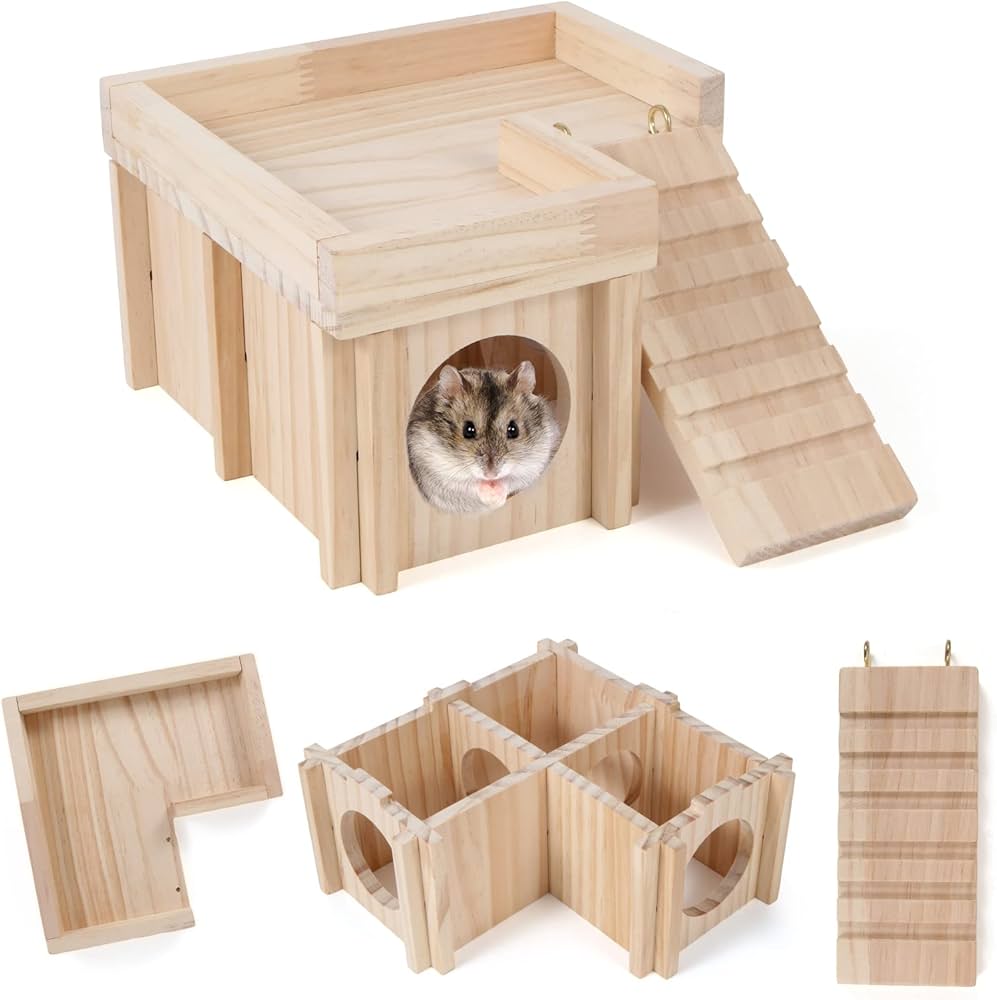Best Hamster for Exploration
When it comes to choosing a hamster that loves to explore, it’s essential to understand the different breeds and their unique characteristics. **Hamsters** are curious, active animals that thrive in an environment that encourages their natural instincts. In this article, we will explore the best hamster breeds for exploration, provide insight into their care requirements, and share tips to create an engaging habitat for your furry friend.
Top Hamster Breeds for Exploration
Certain **hamster breeds** are known for their exploratory nature. Understanding these breeds can help you choose the perfect pet that aligns with your expectations of an adventurous companion. In this section, we will discuss the top breeds suitable for exploration and what traits make them ideal for curious environments.
Syrian Hamsters
Syrian hamsters are one of the most popular **hamster breeds** recognized for their friendly demeanor and robust nature. They are solitary animals with a playful personality, making them a great choice for explorers. These hamsters can be quite curious, often seen investigating their surroundings, climbing over tunnels, and rolling through different terrains in their habitat. Additionally, their larger size compared to other breeds provides them with a stronger ability to interact with larger toys and activity equipment.

Dwarf Campbells Hamsters
Dwarf Campbells hamsters are known for their energetic nature and playful spirit. These little explorers are curious and enjoy burrowing, making them a joy to watch in their habitats. They tend to be more social than other dwarf breeds and may engage in small adventures together, which makes them entertaining pets for families. Their smaller size does not hinder their exploratory behaviors, as they are quick and agile in navigating mazes and tunnels in their living space.

Creating an Exciting Environment
To encourage exploration in hamsters, creating a stimulating environment is crucial. This section discusses practical tips and ideas to enhance your hamster’s living space and promote their adventurous instincts, ensuring they remain happy and engaged.
Choosing the Right Cage
The first step in creating an engaging environment for your hamster is choosing the right cage. A multi-level cage design can provide opportunities for climbing and exploration. Ensure that the cage has ample horizontal and vertical space, with various tunnels and bridges for your pet to navigate. A secure wheel for running is also important, as it provides a great outlet for energy and curiosity. Furthermore, consider adding compartments with **hiding spots** to allow your hamster to explore at their own pace.
Utilizing Toys and Enrichment Tools
Incorporating **toys** and enrichment tools into your hamster’s cage can significantly enhance their desire to explore. Toys like tunnels, small climbing frames, and chew toys can stimulate their senses and keep them engaged. Rotating the toys every few weeks will keep the environment fresh, allowing your pet to rediscover and interact with familiar items again. Providing foraging opportunities by hiding treats throughout their habitat encourages instinctual behavior, adding to their sense of adventure.

Health and Wellbeing Considerations
While enhancing exploration for your hamster is important, their health and wellbeing should always remain a priority. This section addresses the necessary considerations for maintaining a healthy environment that encourages safe exploration.
Proper Nutrition
A balanced diet is essential for a thriving hamster, especially one that enjoys exploring. Ensure your pet receives a high-quality pellet food alongside fresh vegetables and occasional treats. A nutritious diet supports their energy levels, enabling them to explore their surroundings with vigor. Be cautious of the quantity of treats provided to maintain a healthy weight, as obesity can hinder their physical activities.
Regular Health Check-ups
Regular vet check-ups are vital for maintaining your hamster’s health. Watch for any signs of discomfort or changes in behavior, which may indicate health issues. Ensuring that your hamster is healthy allows them to explore their environment safely and confidently, enhancing their overall exploration experience. Keeping abreast of your pet’s health ensures many happy, adventurous years together.
Key Takeaways
- Syrian and Dwarf Campbells hamsters are excellent choices for families looking for exploratory pets.
- Creating a stimulating environment promotes healthy exploration behavior.
- Balanced nutrition and regular health check-ups are vital for an adventurous pet.
FAQ
1. What type of hamster is best for kids interested in exploration?
For kids, **Syrian hamsters** may be the best option. They are friendly, easy to handle, and are naturally curious, making them an ideal exploration companion for children. Their sociable nature often facilitates a strong bond between the child and the pet, allowing for fun and safe exploration activities.
2. How can I enhance my hamster’s environment to encourage exploration?
To enhance exploration, provide a spacious cage with different levels, **tunnels**, and climbing accessories. **Toys** that encourage activity, like exercise wheels and chew toys, engage your hamster and keep them interested in their surroundings. Rotating toys and adding new challenges will help maintain their curiosity.
3. How often should I clean my hamster’s cage to ensure a healthy environment?
Cleaning your hamster’s cage once a week is generally recommended. By changing bedding and cleaning out uneaten food, you maintain a pleasant living space. Regular cleaning helps prevent odors and keeps your pet healthy by reducing the risk of bacteria accumulation.
4. Can hamsters be kept together for exploration purposes?
While some **dwarf breeds** can coexist and explore together, Syrian hamsters should always be kept alone due to their territorial nature. If you wish to encourage group exploration, consider adopting pairs of compatible dwarf species under careful observation to minimize aggression.
5. What are some signs my hamster is unhappy and isn’t exploring enough?
Signs of an unhappy hamster include lethargy, lack of interest in toys, and an overall sedentary lifestyle. If your pet is not exploring or engaging with its environment, it may indicate boredom or stress, emphasizing the need to reevaluate their habitat and enrichment options.
